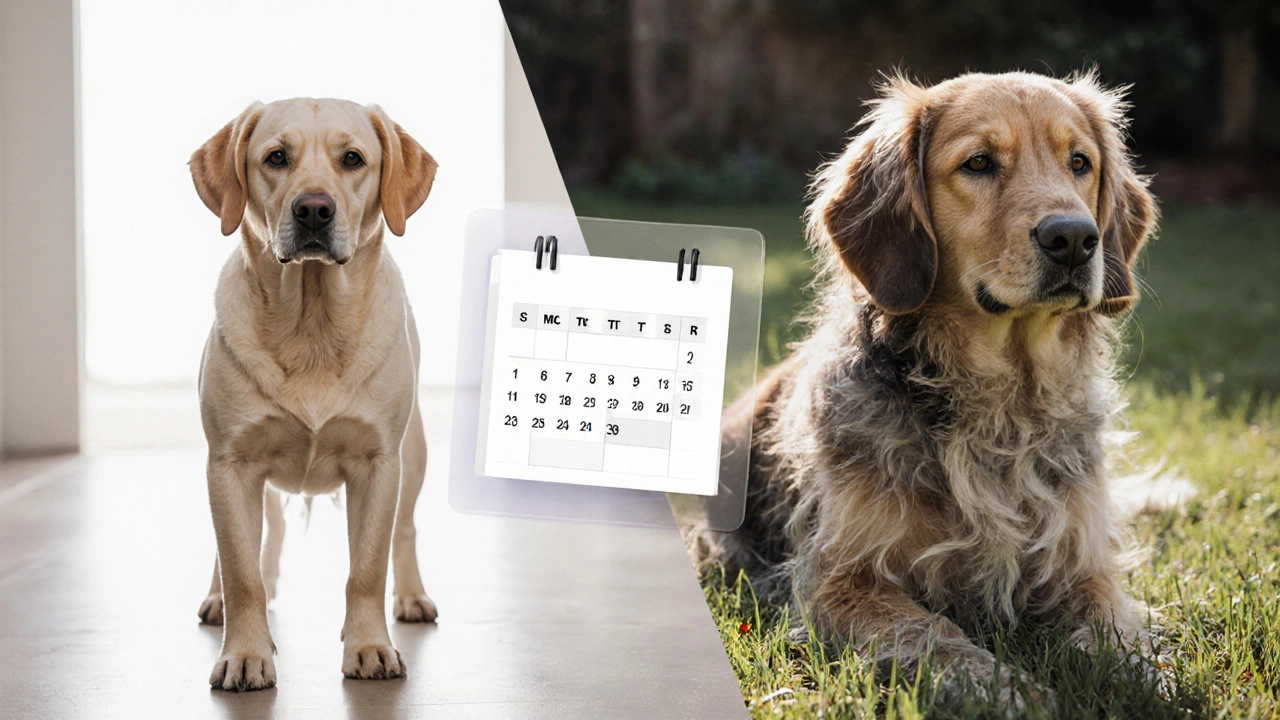Dog Grooming Frequency: Finding the Right Schedule for Your Pup
When talking about dog grooming frequency, the regular interval at which a dog should be bathed, brushed, and trimmed. Also known as grooming schedule, it balances coat health, skin comfort, and owner convenience. Understanding this rhythm helps avoid over‑washing that strips natural oils and under‑grooming that leads to mats and skin issues.
One key related entity is dog coat health, the condition of a dog's fur and skin, including shine, softness, and lack of tangles. Healthy coats need regular brushing to redistribute oils, remove dead hair, and expose the skin to air. Another essential entity is grooming tools, brushes, combs, clippers, and shampoos designed for different coat types. Using the right tool set reduces pulling, saves time, and makes the experience pleasant for both dog and owner.
Why Frequency Matters
Dog grooming frequency encompasses coat type, activity level, and environmental factors. A double‑coated breed like a Golden Retriever sheds heavily and benefits from weekly brushing, while a short‑haired breed may only need a quick brush every two weeks. Dogs that love the outdoors pick up mud, pollen, and ticks, so a tighter schedule keeps parasites at bay and reduces skin irritation. Seasonal changes also shift needs: summer heat can dry out skin, prompting more frequent gentle baths, whereas winter coats often need less water but more moisturising.
Stress reduction is another entity tightly linked to grooming frequency. stress reduction, methods to keep a dog calm during grooming, such as treats, calm music, or short sessions, plays a big role in how often you can safely groom. A nervous pup may need shorter, more frequent sessions to build trust, while a relaxed adult can tolerate longer appointments less often. Gradual desensitisation, using calming aids, and rewarding calm behavior turn grooming into a low‑stress routine.
Putting these pieces together, a practical grooming plan looks like this: assess your dog's coat type, choose the proper grooming tools, set a baseline schedule, then tweak based on stress signals and seasonal demands. For example, start with a weekly brush for a medium‑length coat, add a gentle bath every three weeks, and watch for signs like excessive licking or shaking, which indicate the need to adjust frequency or tool choice.
Below you’ll find a curated collection of articles that dive deeper into each of these aspects – from choosing the right brush for a specific breed to handling grooming anxiety and knowing when a professional groomer might be the best option. Whether you’re a first‑time owner or a seasoned pet parent, the posts ahead give you actionable insights to tailor your dog grooming frequency for a happier, healthier companion.
How Often Should You Groom Your Dog Each Year?
Learn the ideal number of grooming sessions per year for any dog breed, factors that affect frequency, and how to create a practical grooming calendar.
